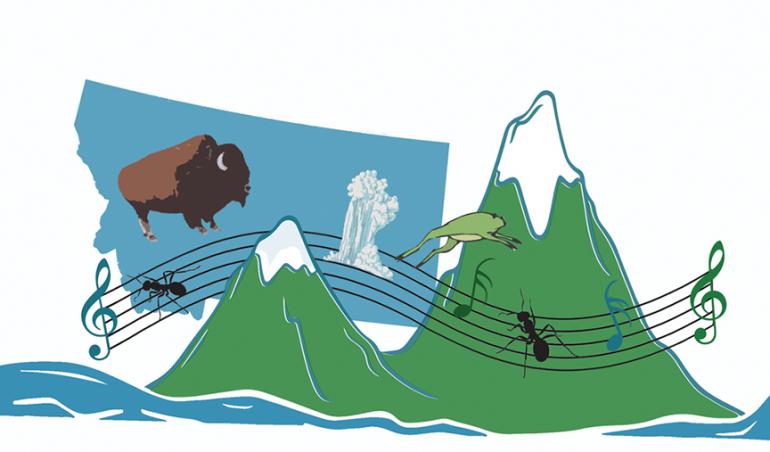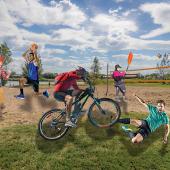The Acoustic Atlas
Montana's natural soundtrack
Meandering his way across America with his dog Charlie, John Steinbeck found himself swept away by the beauty of Montana, lingering far longer than he anticipated in the small towns and natural landscapes. He wrote, “I am in love with Montana… the land is rich with grass and color, and the mountains are the kind I would create if mountains were ever put on my agenda.” Steinbeck and other authors have spent thousands of hours and countless pages describing the purple mountains, lush pine forests, and vivid wildflowers—visual descriptions from the eyes of the beholder. But anyone who has spent time on the trails of Montana, or even cruising the highways with the windows down, knows that sound plays an important role in the total outdoor experience: the splash of a fish, the hoot of an owl, the gurgle of a stream, or the thundering herd of elk in motion.
Even though authors like Steinbeck can magically recreate a Western experience through words, descriptions of sounds seem to fall flat on the page. Recognizing no substitute for the true sounds of nature, Montana State University’s Library has begun to artfully and skillfully develop a database of Western sounds available online for free at acousticatlas.org.
Library dean Kenning Arlitsch and Seattle-based sound recordist Jeff Rice have been working together to collect the sounds of croaking frogs, rumbling thunder, and even scurrying ants. Molly Anderson, the program manager for Collection Development at the library, says one of her favorite sounds is that of a beaver. “I’m a fly fisher,” she says, “and I love encountering beavers out on the creeks. But I never knew what they sounded like until I started working on the Atlas.” She also recalls the “ethereal and fluid sound” of a sage grouse gathering, which she says “calls to mind drumming and dance.”
The Acoustic Atlas is free and accessible online. It’s designed for researchers, scientists, educators, and curious individuals. Anyone looking to get involved or contribute sounds can get connected through the website at acousticatlas.org/contribute. Anderson advocates for the advancement and future of the Acoustic Atlas, believing that the database has the potential to “connect people with the sounds of regional ecosystems and biodiversity.”
He believes that “hearing these sounds can be a powerful experience that engages a community with a deep affinity for its natural environment.” And Montana certainly has a natural environment worth engaging. So while authors continue to attempt to describe the whoosh of wind before a storm, MSU collaborators will be busy in the field capturing the essence of every gust, breeze, and squall through the art of sound.











